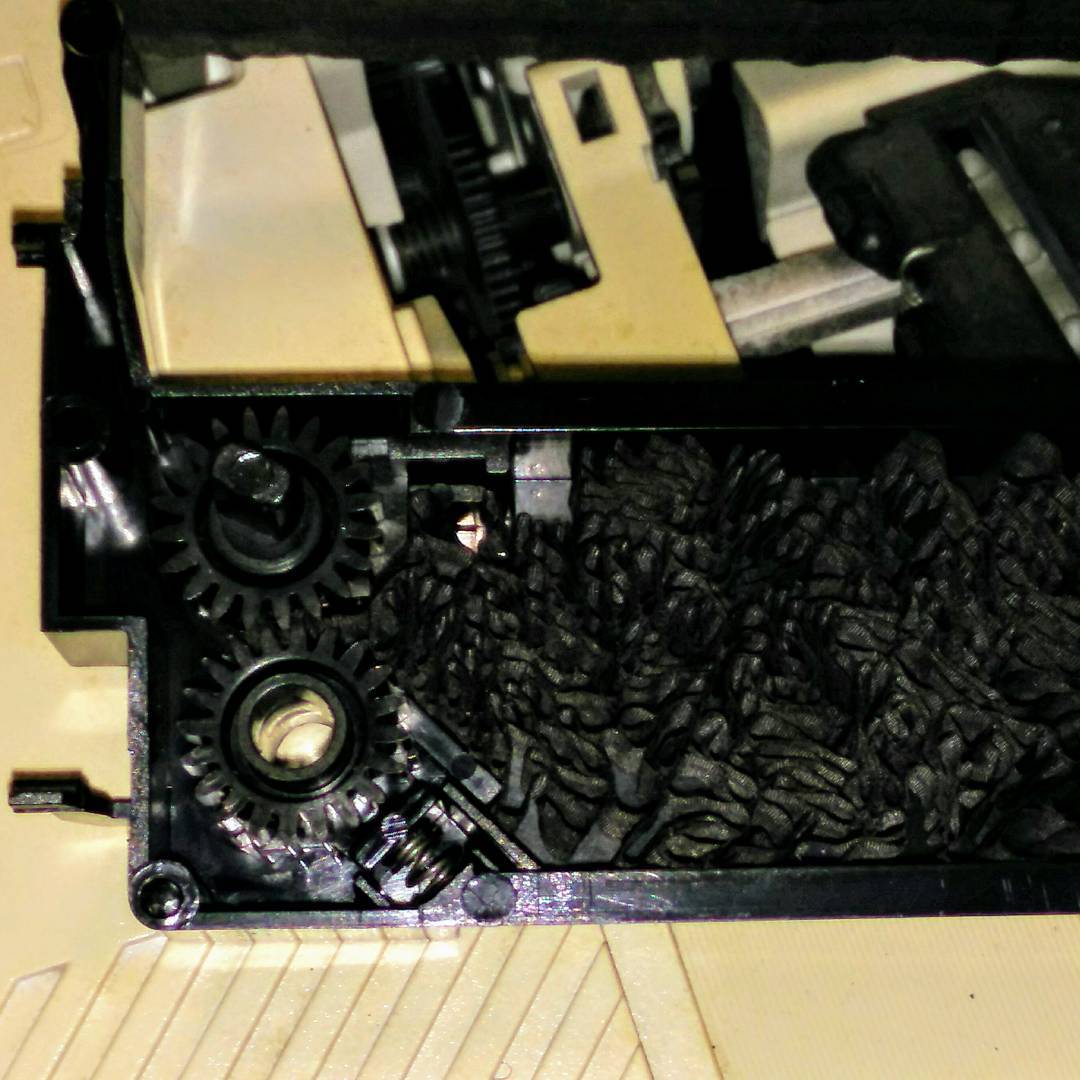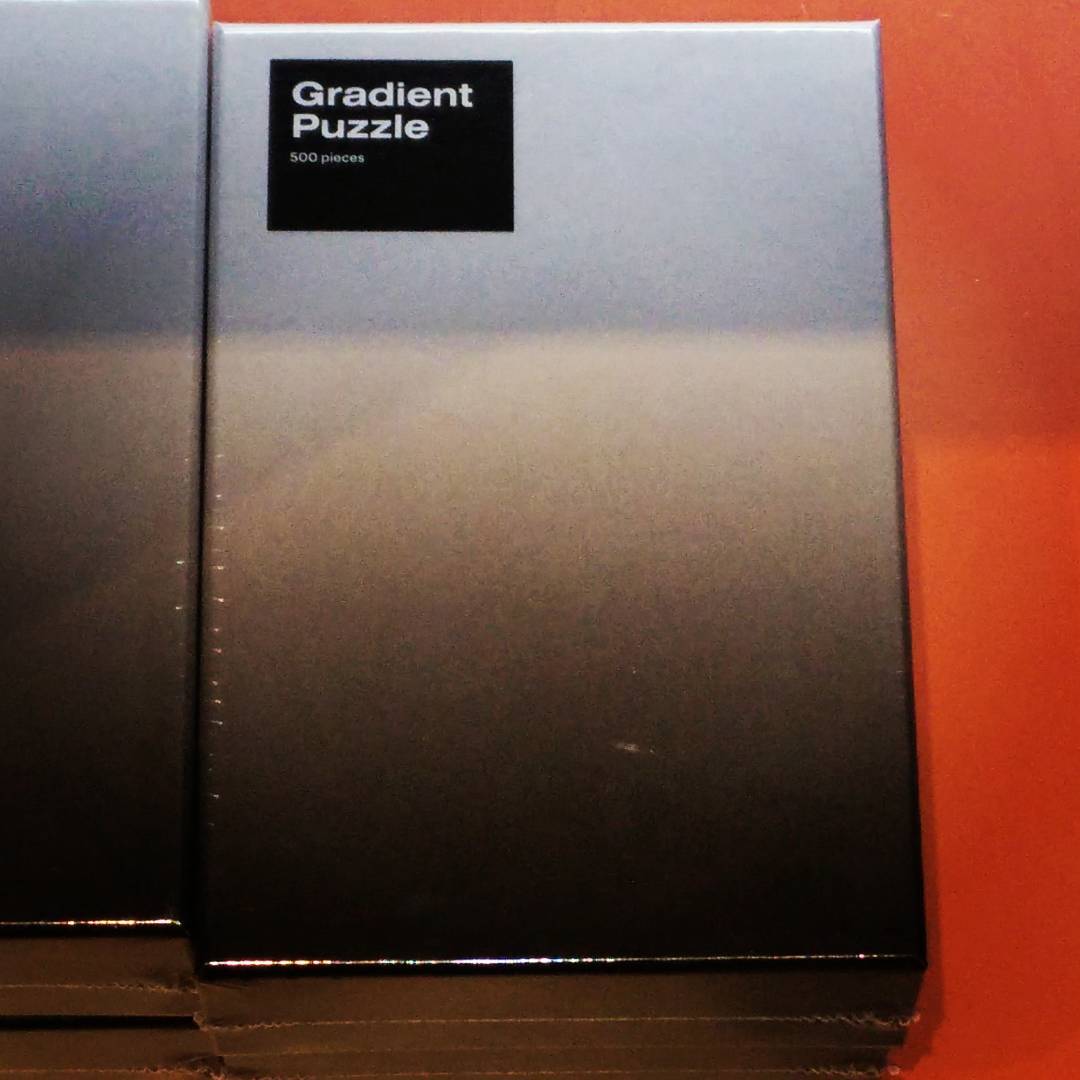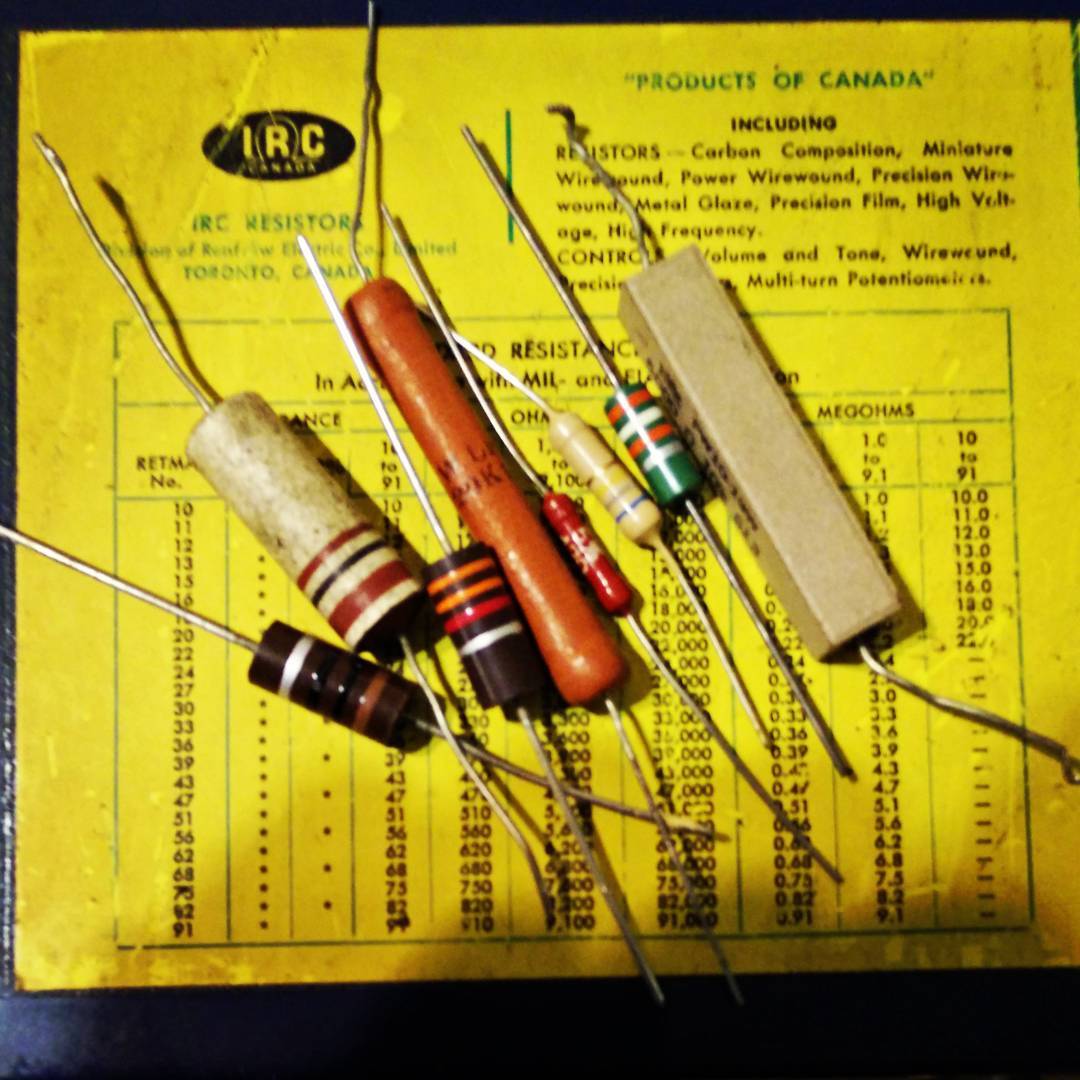Instagram filter used: Lo-fi
Author: scruss
-

I seem to remember this being like the logo of every Amiga software company ever
… except I just made it in OpenSCAD:
// 12-sided box flower - scruss, 2017 // uses HSV library // from https://www.thingiverse.com/thing:279951 // function hsvToRGB(h, s, v, a) use <hsvtorgb.scad>; r = 10; ulx = r * cos(60); uly = r * sin(60); lrx = r * cos(30); lry = r * sin(30); side = lrx - ulx; for(j = [0:11]) { for(i = [0:11]) { color(hsvToRGB(i / 12, 1, (24 - j) / 24, (48 - j) / 48)) { rotate(j * 15) { scale(pow(sqrt(2), j)) { rotate(i * 30) { translate([ulx, lry]) { square(side); } } } } // a simple joy that } // python programmers } // will never know }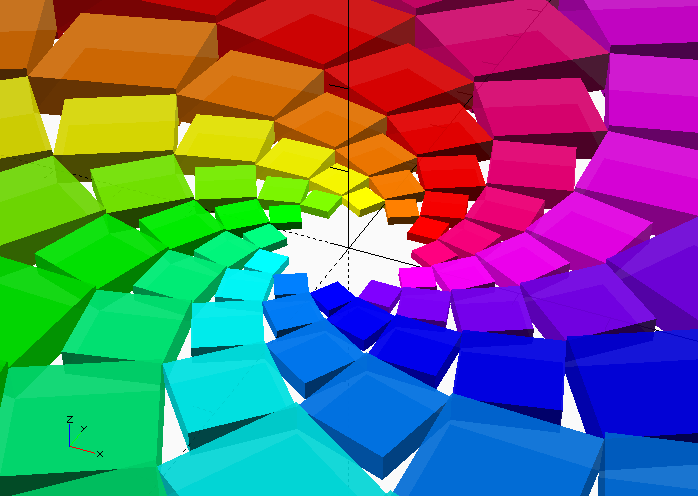
-

More rainbows from silicon chips
Picked up at Junk Independence Day, these are unencapsulated silicon chips. You can make out the solder pads around the top edges, and I think the two solid blocks are PROM storage. The chips are supposedly Mosel MSS1002-14T speech generator ROMs from 1991.
To give an idea of scale, the outside walls of each cell are 3.8 mm / 0.15ʺ.
Here’s another photo, taken through a very cheap 8× loupe with a cellphone camera:
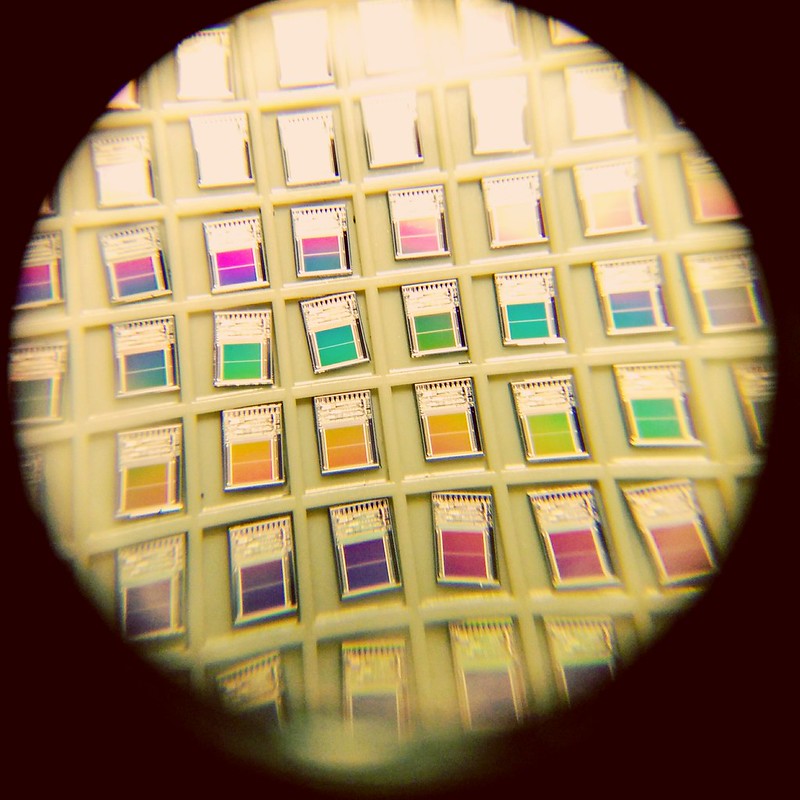
-
Simple — like, really simple — Arduino periodic timer with Brett’s MillisTimer library
I don’t know how many times I’ve written bad Arduino code to call a function every few milliseconds. Sometimes this bad code works well enough for my sketch to actually work. Often, it either doesn’t work at all or does something I really didn’t expect.
So on Arduino Day 2017, I’m glad I found out about bhagman/MillisTimer: A Wiring and Arduino library for working with millis(). It couldn’t be simpler to use: include the library, write the function you want to call every N milliseconds, set up the timer to run every N millis, and put
timer.run()in a loop that’s called frequently. The library handles the timing and resetting all by itself.As an example, here’s the eternal “Hello, World!†of the embedded world, Blink, rewritten to use MillisTimer:
// MillisTimerBlink - blink LED every second // using Brett Hagman's MillisTimer library // https://github.com/bhagman/MillisTimer // (or use Sketch → Include Library → Manage Libraries … to install) // scruss - 2017-04-01 #include <MillisTimer.h> MillisTimer timer1; // new empty timer object const int led_pin = LED_BUILTIN; // use the built-in LED void flash() { // function called by timer static boolean output = HIGH; digitalWrite(led_pin, output); // set LED on or off output = !output; // toggle variable state High/Low } void setup() { pinMode(led_pin, OUTPUT); // use built-in LED for output timer1.setInterval(1000); // set timer to trigger every 1000 millis timer1.expiredHandler(flash); // call flash() function when timer runs out timer1.setRepeats(0); // repeat forever if set to 0 timer1.start(); // start the timer when the sketch starts } void loop() { timer1.run(); // trigger the timer only if it has run out // note that run() has to be called more frequently than the timer interval // or timings will not be accurate }Note that MillisTimer only triggers when
timer.run()is called. Sticking adelay(2000)in the main loop will cause it to fire far less frequently than the interval you set. So it’s not technically a true periodic timer, but is good enough for most of my purposes. If you want a true interrupt-driven timer, use the MsTimer2 library. It relies on the timer interrupts built into the Arduino hardware, and isn’t quite as easy to use as MillisTimer.







